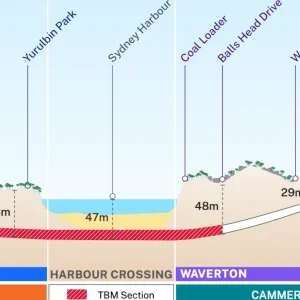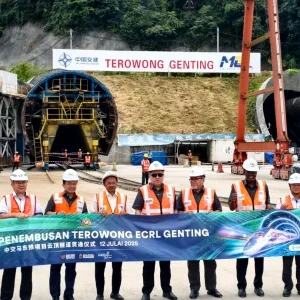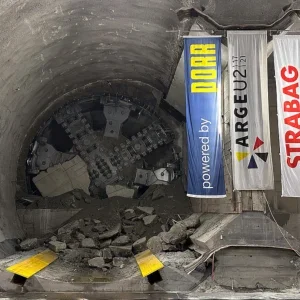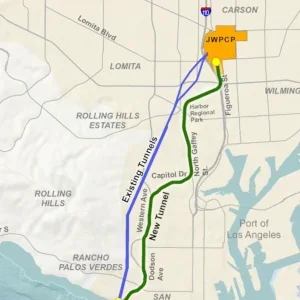In December TBM Florence, which is digging the headrace tunnel on Australia’s Snowy 2.0 project, was transitioning from soft material into harder rock conditions when a depression developed on the surface above the machine. At the time, Snowy Hydro said the integrity of the tunnel had not been compromised, and tunnelling was continuing while work to remediate the surface depression was carried out. A safety exclusion zone was imposed around the surface depression.

Later it said the TBM was paused temporarily while remediation plans were finalised.
Now the New South Wales government has imposed conditions on Snowy Hydro before tunnelling can resume.
A Department of Planning and Environment spokesperson told T&TI: “Snowy Hydro must prepare a modification report demonstrating how the project can safely progress without further environmental damage. It will also need to include further geotechnical studies and detail how it will stabilise and remediate the site. That modification report will be placed on public exhibition once received for community feedback.
“Tunnel boring at the Tantangara location is on hold until the Department gives approval for operations to continue.”
Earlier this month, Snowy Hydro CEO Dennis Barnes said project completion could be delayed by up to two years because of ongoing problems. He cited the soft ground that halted tunnelling at Tantangara; some technically complex design elements requiring more time to complete, making the final design more expensive to construct; the effect of global supply chain disruption and inflation impacting the cost and availability of a skilled workforce, materials, and shipping; and the Covid-19 pandemic.
TBM Florence is the third and final TBM launched on the project. It had tunnelled about 150m and was at a depth of 30m when the 9m-deep depression appeared.
Meanwhile TBM Kirsten, operated by principal contractor Future Generation Joint Venture, has tunnelled 2.9km to reach the underground power station cavern complex.
Snowy 2.0 is Australia’s largest renewable energy project. It will link Tantangara Reservoir (top storage) with Talbingo Reservoir (bottom storage) through 27km of tunnels and a power station with pumping capabilities. This will enable water to be released for energy generation at times of peak demand and pumped back to the top storage when there is excess renewable energy in the system, ready to generate again.







